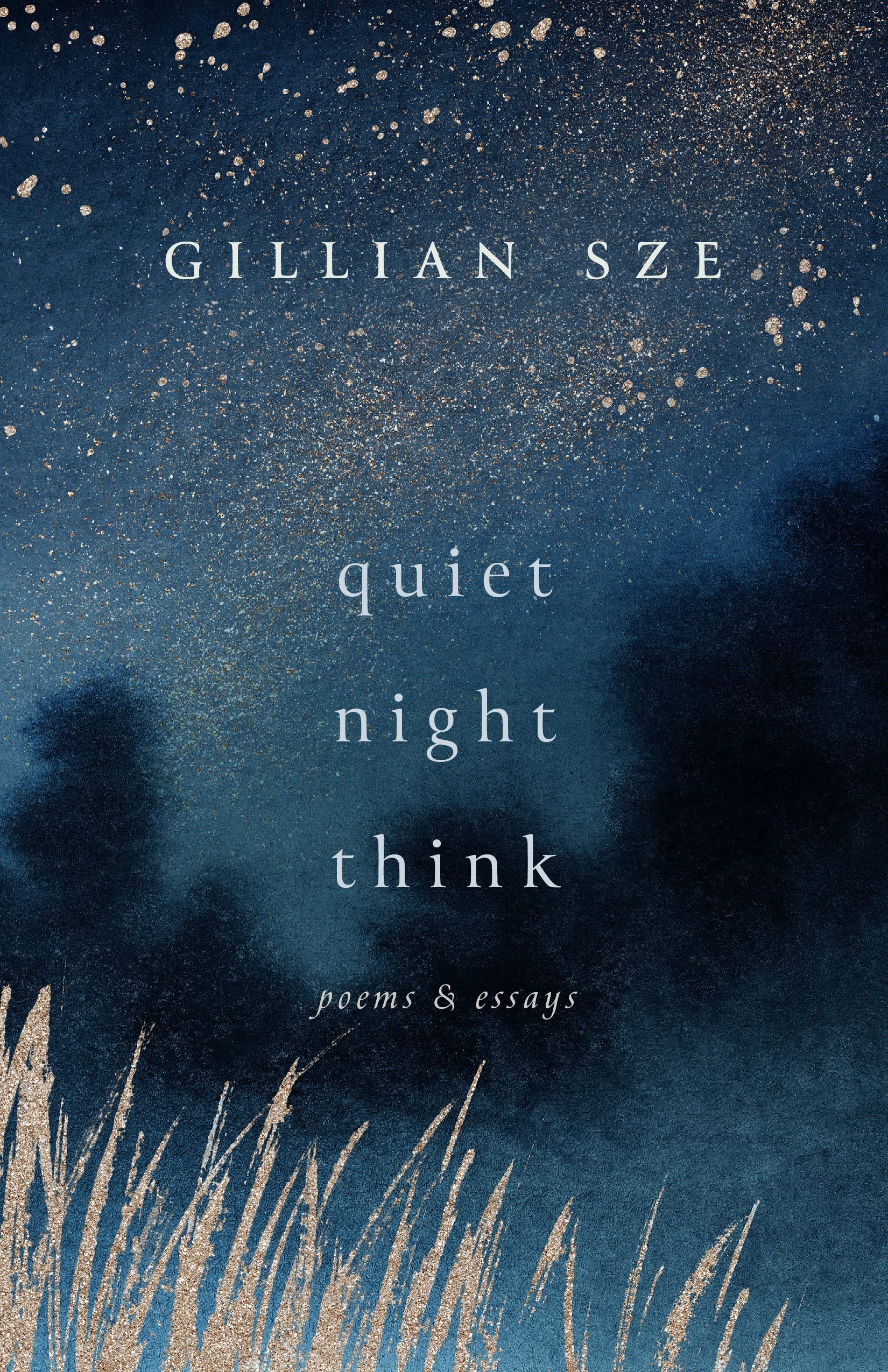To Offer Space: Review of Gillian Sze's Quiet Night Think
Gillian Sze, Quiet Night Think
ECW Press. $21.95 CAD.
Order a copy from ECW Press.
Gillian Sze’s latest collection, Quiet Night Think, takes its title from a famous poem by Li Bai. The first essay of this multi-genre work shares this title and focuses on Sze’s childhood obsession with understanding Li Bai’s poem, thus introducing many of topics this collection addresses—Chinese culture, language, translation, nostalgia, family—and setting the contemplative and introspective tone for the work.
Sze describes learning the Lia Bai poem at age six: “I could recite the poem perfectly in Mandarin—both tonally and rhythmically, incorporating even that unwritten pause the separates the first two syllables from the latter three in each line—but I could see that in English, my stronger language, something was missing” (3). Here we see the technical challenge of translating the monosyllabic Chinese characters of Li Bai’s poem into English, but more precisely the challenge of translating poetry, “which is a different thing entirely” (3).
Sze’s interest in Chinese poetry and language appears throughout the collection, but one need not be familiar with either to appreciate Sze’s discussion of translation. From considering the nature of Chinese poetry—monosyllabic characters, economic word choices, and pithiness —to explaining puns and “the delight of homophones” (13), Sze dives into language use, often highlighting its connection to her own heritage and life, as in “To draw water,” which discusses naming practises. The way Sze writes about language is vibrant. For example, rather than simply saying the number 4 is considered unlucky in China because it can be pronounced to sound like the word for death, she tells us “the near homophone of ‘four’ is scattered throughout the number system in various ways, puncturing the mere task of counting with darkness” (16).
Translation may also be interpreted as transformation—the changing of one thing to another. Sze discusses how English doesn’t quite capture the meaning of Chinese poetry, how something is lost as the poem transforms for an English audience. Similarly, Sze discusses what is lost, what changes, as she turns her attention from her past to the transitionary place of pregnancy: “These days, I am overwhelmed by the task of constructing a world. To prepare a space for you, or maybe to prepare you for what’s already out here. You float in me, in want of nothing, oblivious to the evening news” (26). These pieces often refer to the seasons or passage of time: “In a single gust, it seems,/the leaves yellow/and one evening, I find the maple bare,/the last of summer burnished” (33).
Further, as Sze discusses pregnancy and then motherhood, pieces often have a wonderful mix of frustration, lamentation, humour, and tenderness. Sze pokes fun at herself for the pre-pregnancy beliefs she held, like thinking she could schedule breastfeeding for only three times a day, and is very honest about the limits of her creativity during early motherhood:
“Writing was one of the first things to leave me. For a long time, even after I was done sitting in the moon, this part of me stayed quiet, returning only surprisingly and sporadically. […] I wrote at a rate of a poem per season, the tasks of writing and mothering always in conflict: one demanding time, space, and silence, the other impossibly stingy with all of those” (45).
And here we see a beautiful dovetail between topics of language and writing, and motherhood. In “Quiet Night Think” she writes, “What is this space that poetry offers? Creative space. Emotional space. Reflective space. A space for possibilities.” Then, in “Sitting inside the moon,” Sze references the Chinese custom of “postnatal confinement”: “To sit inside the moon is to be aware of spaces. To feel the empty quiet of the shrivelling belly. To be aware that the home accommodates another life. To learn again how to be a person—to be a new person—in the space of the moon and, eventually, the world beyond” (43). Poetry not only offers space, but requires it as well. Motherhood makes space for a child, first in the womb and then in the mother’s life, changing the space she has for herself. And yet, in being a mother and in not writing, Sze gains experience:
“I learned that while the writing itself is valuable, it was not the only thing. As Rilke noted, to my relief, it was also the experiencing and the experimenting. The sleepy, broken, and incoherent notes I took as I tried to be a mother, and tried to be a writer at the same time. Sitting in the moon is a transformation. You come out of it no longer the same person and no longer the same poet” (46).
Quiet Night Think, in many ways, is Sze offering space both to herself and to readers as she provides opportunity to contemplate. Aside from the Sze’s words themselves, one way this collection offers space is through the literal spacing—and pacing—of its pieces. Essays are divided into sections, separated by a stars (very fitting for a collection titled after nighttime) and poems appear between essays. These spaces and changes in medium allow readers to take a pause before moving on, inviting us to consider the relationships between paragraphs and pieces.
In providing this space, Sze allows us to come to our own conclusions, to take part in the making of meaning and transform in our own ways, rather than telling us exactly what to think. All of this makes the collection an excellent companion for our own quiet nighttime contemplations.
Emily Stewart is a multi-passionate writer/editor based in Ottawa, where she runs Shelf Potential, which offers editing and creative services to indie authors and publishers. She is reviews editor for Arc Poetry, programming chair for Editors Ottawa-Gatineau, and dabbles in illustration and other arts and crafts. Find her on Twitter as @emstewart041.


